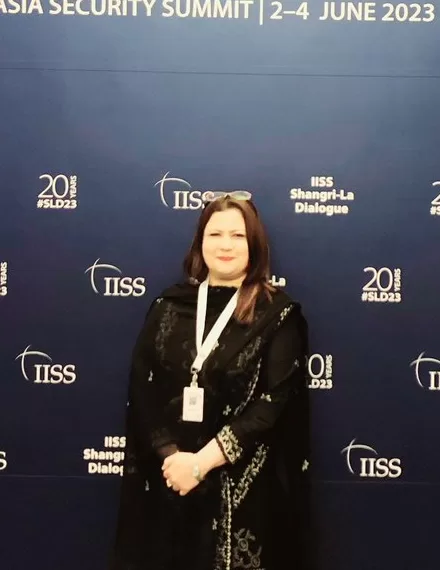The contemporary debates on the changing patterns of great power politics focus on Asia Pacific politics and its growth under the shadows of international power politics. The contesting postures of great powers in the Asia Pacific region have attracted the attention of international academic communities, and it has resulted in a plethora of literature explaining the varying attributes of Asia Pacific politics where the contesting attributes of the United States and China are the main focusing points. The book under review is also a study of the Asia Pacific Region and its increasing security complications under intense US-China relations.
The book follows a non-traditional approach in analyzing the emerging geopolitical competition between Washington and Beijing in the Asia Pacific Region, deeply rooted in their incompatible geopolitical interests. The author of the book, Dr. Atia Ali Kazmi, developed a logical framework with the support of a comprehensive theoretical explanation based on the Balance of Power theory from the realist school of thought (p. xiv). The theoretical orientation of the book enhanced the legitimacy of the arguments and strengthened the validity of the findings in the last chapter. The debate in all chapters is fundamentally based on the author’s in-depth understanding about the book’s central theme. The book’s main theme is divided into seven different chapters, and every chapter attempts to cover a different topic while treating the Asia Pacific region as the global chessboard and the gravitational point of the book’s main debate. In addition to a few introductory pages, the first chapter consists of pages describing the book’s central theme and main focusing points, providing a comprehensive overview of Asia Pacific history. The second chapter traces the genesis of Beijing-Washington’s conflicted interstate interaction. Thus, the first two chapters highlighted the historical complexities and ongoing intensities of both great powers, as Henry Kissinger and John Mearsheimer have explained. The former advocates the prospects of mutual cooperation between both contesting powers, whereas the latter emphasizes the adversarial bilateral interaction of both superpowers (p. 23). The subsequent chapters continued the debate by examining the domestic and regional factors of the Asia Pacific region and their increasing influences in shaping the strategic postures of Beijing and Washington against each other.
The third and fifth chapters highlight the contesting nature of Washington’s rebalancing and Beijing’s Belt and Road Initiative (BRI) plans, whereas the fourth and sixth chapters explain both superpowers’ disputing foreign policies in the Asia Pacific region. The last chapter summarizes all the arguments of the seven chapters in a brief conclusion based on specific logical arguments. The debate in all the chapters contains several interesting points, such as the position of South and Southeast Asian countries in this evolving great power competition where the politics of making alliances and counter-alliances in the maritime domain has prevailed. The inclusion of India in this great game dragged the South Asian region towards the politics of the Pacific region because the inclusion of India in the Pacific politics is fundamentally due to New Delhi’s anti-China standing in the South Asian and broader Asian region. The mention of persistently increasing Indo-US strategic engagement in the third chapter and underlining Washington’s quest for adding New Delhi to different multilateral strategic forums of states logically proved the book has greater relevance to the contemporary policy and academic debates of South Asian regional politics.

Several other arguments in the book’s main debate have increased the significance of this book in the contemporary strategic domain of South Asian literature. The existing literature concerning the mainstream scenarios of the India-Pakistan rivalry and its changing nature under the influences of great power politics rarely focused on the spill-over effects of this New Delhi-Islamabad strategic competition beyond the South Asian region. In this way, Dr Kazmi, the author of the book, has tried to unfold a different dimension of South Asian regional politics, which is getting strategic alignments with the politics of other regions. The author has attempted to provide an insightful exploration of the Asia Pacific Region and its impacts on the politics of various Asian sub-regions due to evolving multi-layered competition between Washington and Beijing.
Based on the above discussion, Dr. Kami’s book contains various exceptional features that have made her analysis conceptually strong and logically convincing. Thus, the book could be considered an appreciable contribution to the existing literature on the United States-China global competition and its contemporary developments in broader Asian politics. Based on her reputable standing in the local intellectual communities of Pakistan, the author has cultivated international recognition through this book, which has mainly attempted to explain the South Asian perspective on the ongoing great power competition between China and the United States in the Asia Pacific region. The students of politics, international relations, security, and strategic studies could consider this book an appropriate reading to understand contemporary great power politics logically.
Moreover, the security, diplomatic, and strategic communities could also treat this book as an essential account to understand the nature of Asia Pacific politics in the presence of contesting American and Chinese policies





